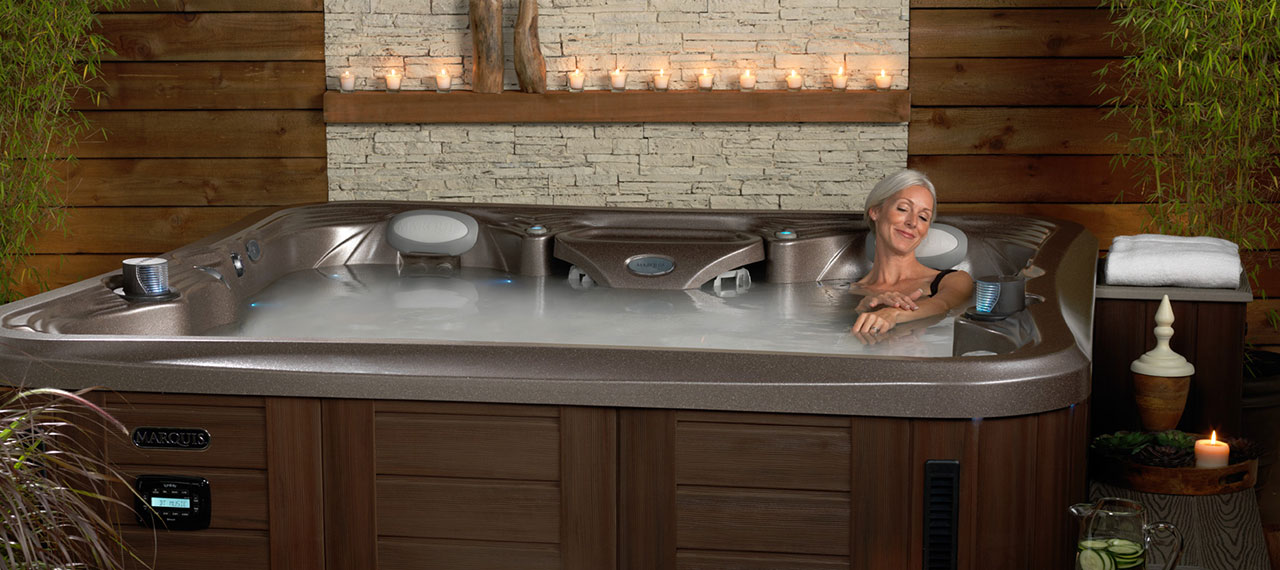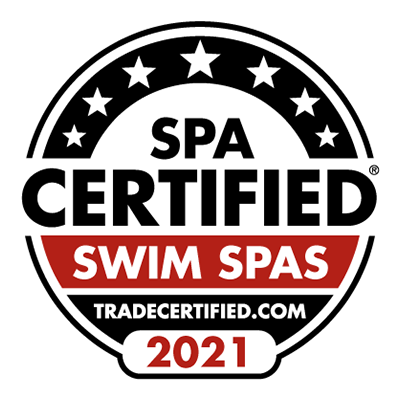
Lower blood pressure
Hot tub health benefits
Blood pressure benefits of a hot tub
Hydrotherapy affects various systems of the body, especially the cardiovascular system. Lower blood pressure is a common result, and a variety of factors are involved. How does it work? What are the benefits? Are there any risks?
The process starts with warm water immersion. Typically, hot tubs operate in the range of 95 to 104 degrees Fahrenheit (35C to 40C), which raises the body’s skin and core temperatures about one degree. That doesn’t seem like much but the effect is dramatic. This type of warming is called "passive heating” because it happens without physical activity. Ironically, higher body temperature increases your heart rate, mimicking the effects of mild aerobic exercise. This is helpful for people with obesity or other mobility issues who find it difficult to exercise on dry land. Passive heating also increases the availability of nitric oxide, a molecule that dilates blood vessels, and dilation creates less vascular resistance. Combined with a faster heart rate, the blood circulates more efficiently and blood pressure decreases.
According to a 2008 study involving mice, warm water immersion activates “heat shock proteins.” This group of molecules protects cells from heat, cold and low blood sugar. A byproduct of this protective process blocks the inflammatory response, improves insulin function and protects against glucose intolerance caused by obesity. Potentially, this could benefit people with type 2 diabetes, who may also have reduced gene expression in heat shock protein HSP72.
Blood pressure benefits continue with steam. Hot tub hydrotherapy resembles the experience of a hot-sauna bath, with the added benefit of hydromassage to target sore tissue, fascia, muscles and joints. A variety of cardiovascular benefits are available, particularly for middle-aged men.
Research published in a 2015 issue of JAMA Internal Medicine evaluated the cardiovascular effects of sauna bathing on over 2,300 middle-aged men. Apparent health benefits included “fewer deaths from heart attacks, strokes, various heart-related conditions, and other causes.” Compared to those who only participated once per week, those who did so two or three times a week experienced a 23% lower risk of fatal coronary heart disease episodes or cardiovascular disease. Those who participated four to seven times a week experienced a 48% lower risk of similar incidents.
Hydromassage, or water massage, offers further cardiovascular benefits. It is comparable to massage on dry land, but is available in the comfort of home. Evidently, women in particular stand to benefit. For example, a study published in the International Journal of Preventive Medicine looked at the blood pressure benefits of massage on 25 pre-hypertensive women. (Pre-hypertension is an early warning sign of high blood pressure.) Each woman received a 10- to 15-minute massage, three times a week for 10 sessions. Their blood pressure was compared to a group of 25 different women who experienced the same relaxing environment, but without massage. Researchers found that the average “blood pressure in the massage group was significantly lower in comparison with the [non-massage] group.” Even more impressive, after 72 hours the massage group still had “a significant difference” in lower blood pressure compared to the non-massage group.
Hot tubs and hypertension
What about hypertension? Over the decades, hearsay about hot tubs and high blood pressure has created misapprehension. Recent studies may help to clarify the subject, but only a healthcare provider can provide you with qualified medical advice.
According to a 2003 study, published by the Cardiovascular Risk Factor Reduction Unit at the University of Saskatchewan, researchers set out to answer the question: “Are hot tubs safe for people with treated hypertension?” Experts studied 21 hypertensive men and women (aged 46-76 years old) and measured their blood pressure before, during and after 10 minutes of immersion in a hot tub. The same measurements were taken on a control group of 23 men and women (aged 19-83 years old) who did not have hypertension. What was the result? “Immersion in a hot tub for 10 minutes lowers blood pressure in subjects with treated hypertension, but no more than in [the non-hypertensive group].” In other words, the people with hypertension reacted the same as the people without hypertension. The experts concluded, “Spending 10 minutes in a hot tub should be safe for most treated hypertensive patients.”
Another study, published in 2013 in the journal Blood Pressure Monitoring, looked at the same question in the context of heated-water exercise. They demonstrated that it lowered blood pressure in patients with “mild-to-moderate hypertension.” Among other positive results they found that, “cardiovascular load was reduced significantly during the 24-hour daytime and nighttime period after the heated water-based exercise.” What did they conclude? “These effects suggest that heated water-based exercise may have a potential as a new therapeutic approach to resistant hypertensive patients.”
Interested in heated-water exercise? Looking for a more immersive experience? Aquatic Training Vessels™ swim spas are ideal for heated-water exercise, cardiovascular fitness, low-impact training and sports therapy. Enjoy all the benefits of hot tub hydrotherapy with room to exercise and space to party.
When extra caution is advisable
A few scenarios are important to consider. Fluctuating between hot and cold environments may raise your blood pressure. So if you have hypertension (or concerns about high blood pressure), speak to a healthcare provider before doing any of the following: 1) quickly transitioning from a hot tub into a cold pool; 2) getting in or out of a hot tub in very cold or snowy conditions, which may expose you to rapid temperature changes; 3) engaging in contrast water immersion (CWI) therapy, which involves repeatedly switching between hot water immersion and cold water immersion.
Apply the same caution if you have concerns about low blood pressure, or have symptoms such as dizziness, lightheadedness or fainting. If you take medications or supplements that lower your blood pressure, be cautious of activities that could reduce your blood pressure below safe levels.
The bottom line
Hydrotherapy may lower your blood pressure by combining the benefits of warm water immersion, steam and hydromassage. For the vast majority of people, this is just one of many benefits. To learn about other health benefits, including the benefits of spa therapy, browse our Hot Tub Health Benefits section. And if you’re ready to experience hot tub ownership, contact your local Marquis Dealer to get started.
See related topics
*Marquis hot tubs can be set as high as 104 degrees (40C), which is the maximum recommended therapeutic limit for hot tub hydrotherapy.
References:
- The Conversation: “A Hot Bath has Benefits Similar to Exercise”
- Netherlands Heart Journal: "Sauna Bathing: A Warm Heart Proves Beneficial”
- Canadian Medical Association Journal: “Are hot tubs safe for people with treated hypertension?”
- Blood Pressure Monitoring: “Effects of Short-term Heated Water-based Exercise Training on Systemic Blood Pressure in Patients with Resistant Hypertension: A Pilot Study”
- Journal of Applied Physiology: “Passive Heat Therapy Improves Cutaneous Microvascular Function in Sedentary Humans Via Improved Nitric Oxide-dependent Dilation”
- International Journal of Preventive Medicine: “Durability of Effect of Massage Therapy on Blood Pressure”







